
|   |

|   |
Kalakshithi’s Kalakshetra seva - Ashish Mohan Khokar, Bangalore e-mail: khokar1960@gmail.com Photos: Sarayu Rao September 23, 2012 Kittusaar (Prof. Guru MR Krishnamurthy) is one of the senior-most male, real gurus of Bangalore today. After decades of association with and service to his alma mater Kalakshetra, he resettled in Bangalore and in 1991 created a fine arts centre Kalakshithi in a most traditional area – Basavanagudi (the other being Malleswaram and Malgudi, the title of imaginary village, immortalized by RK Narayan and made into a popular TV series Malgudi Days, comes from the combination of two areas: Mal-Gudi!). Just so our readers outside these areas or city of Bangalore, know… Kittusaar is the most genial of gurus, soft-spoken, kind, gentle and genteel. He belongs to another era when good values in art were all that mattered, not showmanship or one-upmanship. When most youngsters today, barely out of college, become dance teachers and pompously call themselves gurus, this senior guru has maintained a low profile and served his muse, selflessly. An ace student and associate of Rukmini Devi Arundale, who founded Kalakshetra on 1st Jan 1936, Kittusaar showcased not only his art but his gurubhakti to his guru and teacher, Athai, as Rukmini Devi was fondly called…the entire evening showed voluntary spirit at its best. Parents received and fetched guests, they compered, organized mementos and conducted the evening with aplomb. It was nice to see the guru himself sit and enjoy the proceedings, peacefully. 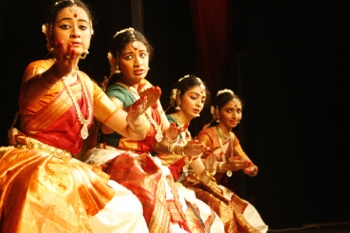
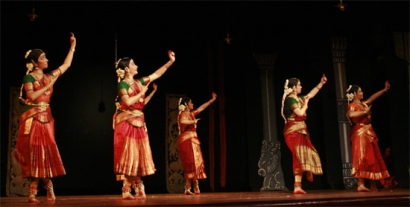
Over a dozen well-trained students showcased their art through a full-fledged margam, a rarity nowadays. Most dancers don’t have stamina to do a margam fully and resort to short cuts and cut varnam to twenty minutes and that’s right after the invocatory because most can’t even do an alarippu properly! So a stuti done mostly standing without having to bend much and then straight into Varnam, concluded by some Padam is a Bharatanatyam recital nowadays. Dancers blame that audiences have no patience or time but when an Alarmel Valli or Vyjayanthimala dances, people sit through two hours… why? Kittusaar’s evening (for that’s what it was) regaled the full-hall audiences with deep felt dance. Tremendous angashudhi, clarity in articulation and beauty of art manifested abundantly. The music was divine thanks to first rate musicians who came from Chennai. While many girls showcased their learning, two boys also provided some contrast, one with stiff neck and lead feet and adbhuta rasa written all over his face (Rutwick Vasavada) and the other, shorter but sprightlier and maintaining all positions and postures well (Sudeep). 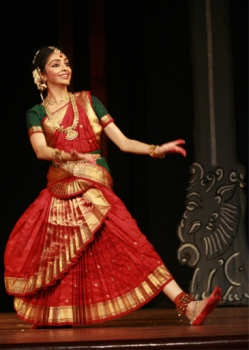 Rakshita Prasad  Chethana 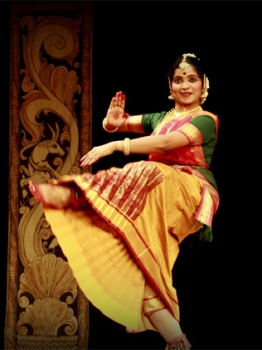 Deepa Bhat 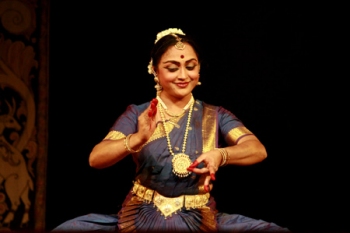 Sumana Nagesh 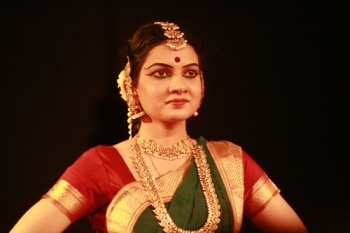 Manjushri Udupi Amongst the girls who acquitted themselves with high marks were Rakshita Prasad with her doe-eyed abhinaya ability; Gagana Badrinath with her soft deliveries and benign personality; Aparna Mahabaleshwar, Chethana V Casiker and Aditha Prakash with clarity of articulation of art; Manjushri Udupi, Madhuri Nagesh, and Priyatma Kincha tried their best. Suchitra Diwakar, Namrata Honnatti, Deepa Bhat (who also compiled and showed an excellent film on Rukmini Devi’s life, with pictures from here and there) and Susmitha Viralam showcased the guru’s gift to them while Sindhuja Sudarshan smiled all through and Sumana Nagesh was rather heavy to articulate anything aesthetically. In fact, most students danced in first speed, to maintain clarity of rhythm and postures. Only in the Javali, the pace was different but one resultant outcome of this deliberate rendition was that the whole evening looked peaceful, a quality missing when dancers and gurus try to show off with teermanams rendered in shatabdi speed that few can maintain or do properly! In a year, when we professional dance observers witness at least 300 shows, in maybe 3 continents and over 30 cities, it is rare one comes back fulfilled .Total mano-tripti and rasa-anubhuti, it was! One came back soaked in the divine art of Bharatanatyam, as it was intended and as Athai taught her shishyas, among whom, Kittusaar is amongst the last senior male lighthouse, spreading the light of his art, far and wide. Today, he ranks as a beatific, benign guru, the hallmark of a true guru. Ashish Mohan Khokar learnt Kathak, Bharatanatyam, western ballet and Orissi before taking to arts administration. He served the govt., in many cultural capacities, including the Delhi State Academy for Arts (1984-85); chief coordinator Festivals of India in Sweden (1986-87); Festival of India in France, Germany and China (1985-90). He was Director of INTACH, under PM Rajiv Gandhi’s Chairmanship. He served the Times of India as Dance Critic in Delhi from 1990-2000 and Bangalore 2000-3. Since then, he edits and publishes India’s only yearbook on dance – attendance - and is Curator of the Mohan Khokar Dance Collection. He has served dance for over 25 years as a reputed critic-historian. He has written over 35 books on Indian arts and culture; is on many boards and committees serving dance (DD, INTACH, IIC, BSM, ICCR, UNESCO-DC). He Chairs the Dance History Society of India and holds special dance DISCourses. attendance-india.com |